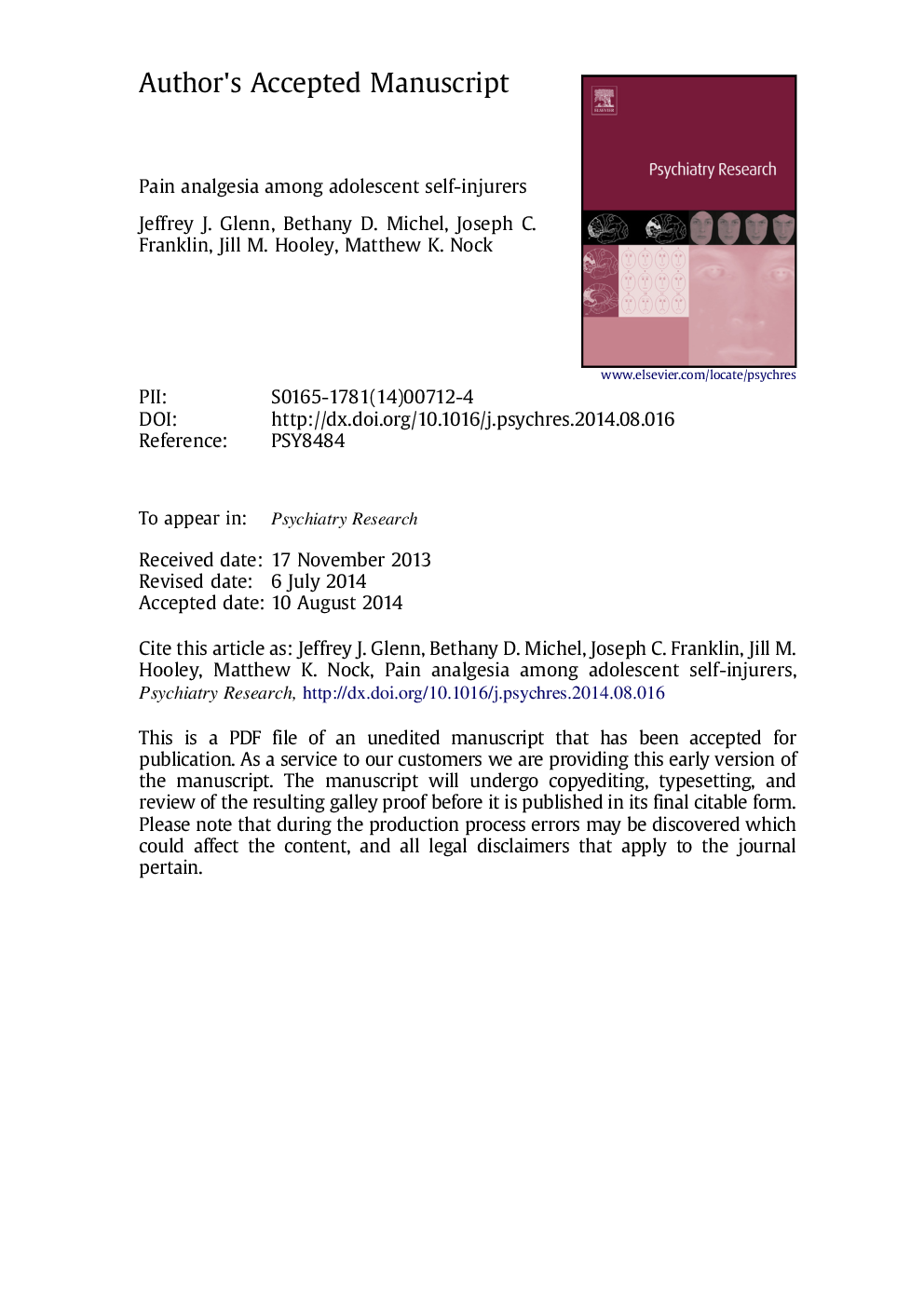| Article ID | Journal | Published Year | Pages | File Type |
|---|---|---|---|---|
| 6814590 | Psychiatry Research | 2014 | 25 Pages |
Abstract
Although non-suicidal self-injury (NSSI) involves self-inflicted physical harm, many self-injurers report feeling little or no pain during the act. Here we test: (1) whether the pain analgesia effects observed among adult self-injurers are also present among adolescents, and (2) three potential explanatory models proposing that habituation, dissociation, and/or self-criticism help explain the association between NSSI and pain analgesia among adolescents. Participants were 79 adolescents (12-19 years) recruited from the community who took part in a laboratory-based pain study. Results revealed that adolescent self-injurers have a higher pain threshold and greater pain endurance than non-injurers. Statistical mediation models revealed that the habituation and dissociation models were not supported; however, a self-critical style does mediate the association between NSSI and pain analgesia. The present findings extend earlier work by highlighting that a self-critical style may help to explain why self-injurers exhibit pain analgesia. Specifically, the tendency to experience self-critical thoughts in response to stressful events may represent a third variable that increases the likelihood of both NSSI and pain analgesia. Prospective experimental studies are needed to replicate and tease apart the direction of these associations, and may provide valuable leads in the development of effective treatments for this dangerous behavior problem.
Related Topics
Life Sciences
Neuroscience
Biological Psychiatry
Authors
Jeffrey J. Glenn, Bethany D. Michel, Joseph C. Franklin, Jill M. Hooley, Matthew K. Nock,
